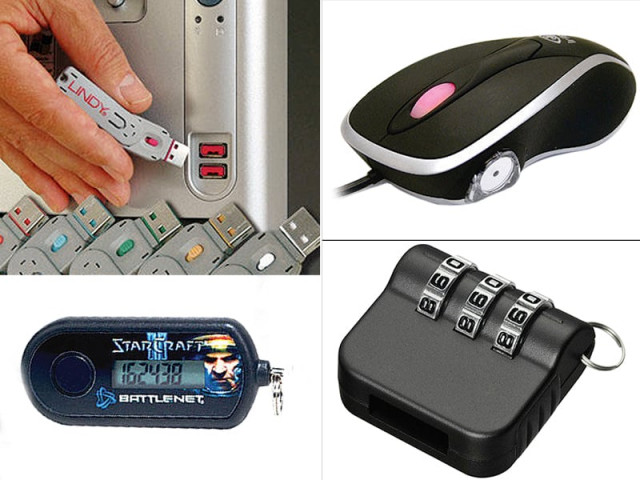Data protection: To protect and serve
More creative and more unorthodox — read ‘cool’ — methods to protect your data.

More creative and more unorthodox — read ‘cool’ — methods to protect your data.
Data theft, website vandalism and hacking are constant concerns in this age when information is power and everyone wants to ensure its safety. For the longest period, users have relied on text-based passwords as the first and sometime only line of defence and this has worked fairly well, and still does. But this doesn’t mean that you cannot find more creative and more unorthodox — read ‘cool’ — methods to protect your data.
USB lock
Data may be a virtual commodity, but this doesn’t mean that the protection must be the same. For the real people out there we bring you the Headlock! This tiny and very inexpensive device slips over the connector of any USB flash drive (or any USB device) and locks in place with a three-digit combination. But do keep in mind that the lock’s three wheels only provide 1,000 possible combinations. So a patient hacker with a few hours to burn could easily get in.
Wireless PC Lock
The tiny green puck clips to your shirt or keychain and serves as a PC proximity sensor. If you move two metres or more away from the computer, the receiver plugged into your machine’s USB port locks the computer via software. Once back within range, the PC unlocks. This can help you save the two seconds it takes to log in and log out manually. And I think for that, it’s a bargain!
Swiss Army USB
The Swiss Army USB has its share of the usual bells and whistles but it also has a biometrically protected, self-destructing encrypted USB thumb drive. To access the encrypted data stored on the built-in flash drive, you need to swipe your fingerprint across the Secure Pro’s built-in optical sensor. But don’t try fooling it with a severed finger, it’s heat-sensitive as well, so only living fingers will do. If you try to open the flash drive’s case, the Secure-Pro burns out its chips in spite. Very secure — and very strange.
PC Clamp
The wheel clamp is not the only device out there to lock something down. Similar technology exists for laptops as well. Perhaps a day will come when passwords won’t be enough and we will physically need to clamp shut our notebooks to ensure data security. This device, launched by Elecom, and now cloned by many others, prevents users from physically opening your laptop to use it. It also comes with a cable to prevent people from just walking off with your machine.
USB Port Blocker
Your machine could be used by unmonitored users, say in a hotel lobby or the airport. And you might also want to protect your PC from illicit USB device connections. The Lindy USB Port Blocker is a two-part device consisting of a key tool and a “lock,” which is essentially a dummy USB connector. The key tool deposits the lock into an unoccupied USB port and detaches, blocking physical access to the port.
Peeping Tom
Now you can peep, legitimately and not be censured for it. When you peer inside the Qritek IRIBO mouse, or rather look inside the eye on the side of the device, you get an eyeful of light which works with a camera inside the mouse to scan your iris to confirm your identity. Only then will it give you access to the computer it is attached to.
Published in The Express Tribune, Sunday Magazine, August 25th, 2013.
Like Express Tribune Magazine on Facebook, follow @ETribuneMag on Twitter to stay informed and join the conversation.


















COMMENTS
Comments are moderated and generally will be posted if they are on-topic and not abusive.
For more information, please see our Comments FAQ